|
||||
|
||||
![]()
.jpg) Chief of State, Empress: Victoria 20.6.1837-22.1.1901 |
![]()
|
||||
|
||||
| H20.1 2 Annas 1881-1901 | Images Needed | |||
 H20.2 4 Annas Issued? CL1 |
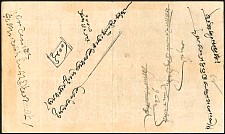 Back Redeemed? |
|||
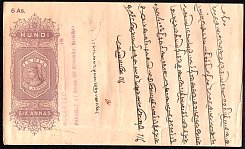 H20.2 - 3, P.UNL 4 - 6 Annas 25.9.1900 Bank Bombay SS |
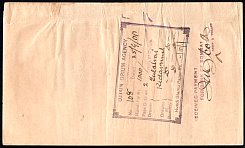 Back Ujjain Opium Agency |
|||
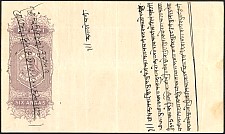 H20.3 6 Annas Issued? CL1 |
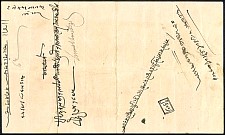 Back Redeemed? |
|||
| H20.4 8 Annas 1881-1901 | Images Needed | |||
 H20.5 10 Annas Issued? CL1 |
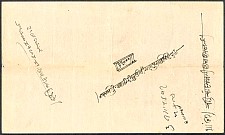 Back Redeemed? |
|||
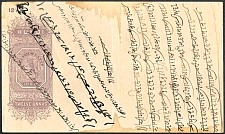 H20.6 12 Annas Issued? CL1 |
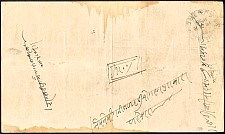 Back Redeemed 16.9.1886 |
|||
| H20.7 1 Rupee 1881-1901 | Images Needed | |||
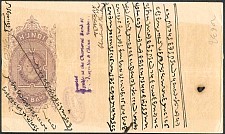 H20.8 1 Rupee 8 Annas Issued by Allahbad Bank, Cawnpore Branch 3.6.1893 CL1 |
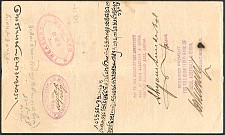 Back Redeemed by Chartered Bank IND, AUS & CHN, Bombay |
|||
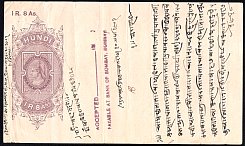 H20.8, PUNL 1 Rupee 8 Annas 8.7.1901 Bank Bombay SS |
 Back Watermark Rutlam Opium Agency |
|||
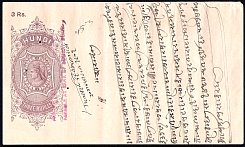 H20.9, P.UNL 3 Rupees 18.3.1901 Bank Bombay SS |
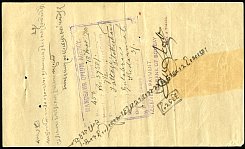 Back Watermark Mandsaur Opium Agency |
|||
| H20.10 - H20.11 4 - 12 Rupees 1881 - 1901 | Images Needed | |||
|
Hundis were financial instruments used
for both trade and credit purposes, as well as a vehicle for transferring funds
from place to place. The India Bills of Exchange Act of 1881 standardized the issuance of the Hundi throughout British India. They were reportedly begun in 1586 and had great use in India. Hundi's were usually written in an elaborate script which only bankers knew how to read and write, to prevent counterfeiting. For additional info on the type and use of Hundis as financial instruments, see: Wikipedia - Hundi Another different type of Hundis were the Khadi Hundis. They were used as a local currency as an exchange medium for khadi cloth. They could only be redeemed at a KHADI BHANDAR (hand woven cloth outlets) and were popularized by Mahatma Ghandi. |
|
CL1
We gratefully acknowledge CL1 for these images. |
![]()